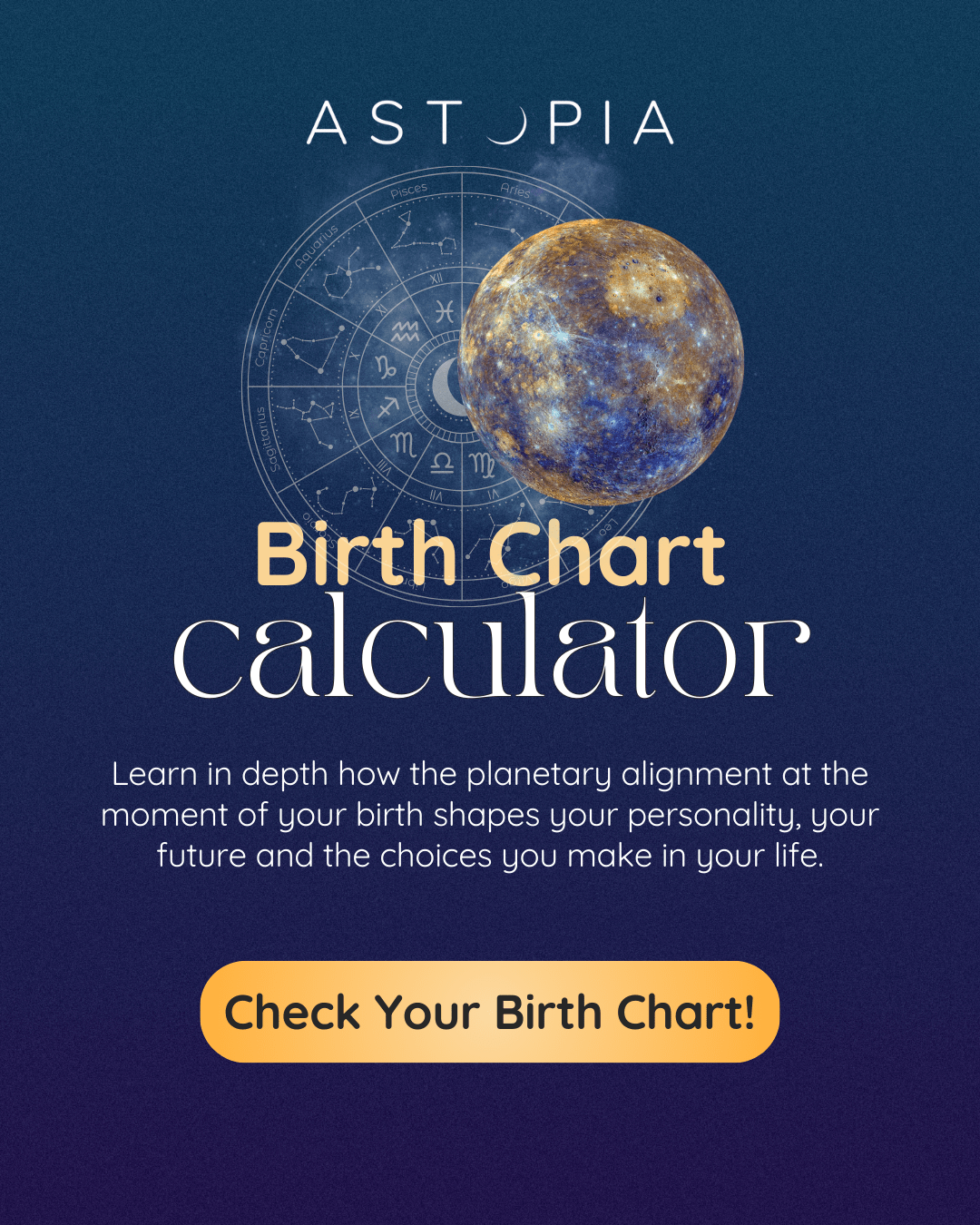
1/22/2024
Author: Astopia TeamSynastry: The Astrological Art of Relationship Harmony
Astrology is not limited to personality analysis and future predictions; It is also an important tool in understanding relationships in depth. In this context, synastry stands out as the astrological art of relationship harmony. This technique, which examines the harmony, dynamics and potential difficulties between two people by comparing their natal charts, can be used in friendship and business relationships as well as romantic relationships.
The word synastry, which originates from ancient Greek and is formed by adding the prefix "syn-" meaning "with" or "together" to the noun "astro" meaning star(s), can be interpreted as "the harmony of the stars" and today means the harmony of star charts, or how we call them, birth charts. Even the word itself has the magic of the stars in it!
Synastry charts show the flow of energy and interactions between two people. This plays a critical role in the astrological examination of relationships and provides a much deeper and more complex analysis beyond zodiac sign compatibility. The secrets of synastry can reveal the emotional compatibility between couples, their communication styles, feminine and masculine energy dynamics, and their basic attitudes towards each other.
In this guide, we will examine step by step how synastry works and how relationship compatibility is examined through birth chart analysis and astrological dynamics. Now, get ready to discover how compatibility is understood through astrology and how synastry differs from other compatibility techniques!
Harmony in Astrology
In astrology, the relationship compatibility of two people requires a complex and multidimensional analysis. Two different methods are generally used to understand harmony in relationships: synastry and composite map.
- Synastry is a method that compares the birth charts of two individuals and examines the planetary angles and interactions between them. This reveals the natural flow of energy between two people and the dynamics of their relationship. Synastry reveals how two people respond to each other, where they are compatible, and potential challenges they may face in the relationship.
- The composite chart combines the birth charts of two people to create its own map of the relationship. This map represents the total energy of the relationship and the overall character of the relationship. The composite chart is used to analyze the common aspects and general trends of the relationship.
Both methods offer in-depth insights into astrological compatibility and relationship dynamics. However, in this article we will focus on Synastry and look more closely at the direct interactions and personal bonds between two individuals.
What is Synastry
This method compares the birth charts of two people and reveals the astrological interactions between them. In synastry, the compatibility of couples with each other, areas of conflict and the potential strengths and weaknesses of their relationships are understood using astrological dynamics.
By superimposing the charts of two people, the influence of each person's planets on specific points in the other person's chart is examined. These interactions reveal the basic character of the relationship, how couples respond to each other, and where the relationship is strong or weak.
Synastry is very effective in evaluating the power of attraction, emotional harmony and communication styles between individuals. This can be used in love relationships as well as business, friendship and family relationships. Synastry analyzes can enable couples to understand each other better and build their relationships on stronger foundations.
How to Read a Synastry Chart
Reading a synastry chart is an important step in understanding the astrological interactions of two people. This chart is used to understand couples' compatibility with each other and potential areas of conflict. Here are the main points to consider when reading the synastry chart:
Planetary Aspects in Synastry
In the synastry table, the angles formed by one person's planets with the other person's planets or important points are examined.
These aspects determine the nature of the interaction between couples. For example, a positive aspect between the Sun and the Moon indicates emotional harmony and understanding, while a difficult aspect can lead to disagreement and misunderstanding.
The Role of Houses in Synastry
In the synastry chart, where one person's planets fall in houses in another person's natal chart is also important.
These placements of houses show the influence of one person on another person and in which areas the relationship is concentrated. For example, if one person's Sun falls in another person's seventh house, this may indicate a strong partnership and close relationships.
When reading a synastry chart, taking into account these two key components – planetary aspects and house placements – is crucial to understanding the overall dynamics and potential difficulties of the relationship.
Key Planets and Points in Synastry
In synastry analysis, some planets and points are particularly important in understanding the quality and character of the relationship. Here are these key elements and their roles in relationships:
Sun, Moon and Ascendant Signs
- Sun: It represents the basic identity and life energy of the individual. The position of the Sun affects the basic attraction and compatibility of individuals in a relationship to each other.
- Moon:It expresses emotional reactions and instinctive needs. The position of the Moon determines the level of emotional security and comfort in the relationship.
- Ascendant:It represents personal outward expression and social personality. The interaction between ascendant signs shows how couples communicate with each other and what image they present in society.
Venus and Mars: Love and Desire
- Venus:It symbolizes love, attraction and harmony in relationships. The position of Venus reflects the nature of the couple's love and appreciation for each other and the romantic harmony in the relationship.
- Mars: It represents passion, sexual attraction and the power of action. The position of Mars reveals the physical attraction and conflict tendencies in the relationship.
Outer Planets and Their Effects
- Saturn, Uranus, Neptune, Pluto:These outer planets influence the deeper, longer-term dynamics of the relationship. For example, Saturn represents the level of responsibility and commitment in the relationship, Uranus represents sudden changes and the need for freedom, Neptune represents dreams and ideals, and Pluto represents transformation and power struggles.
In synastry, the positions of these planets and points play a vital role in understanding the basic structure of the relationship and the harmony between couples.
Basic Elements of Synastry and Their Meanings
Various astrological aspects in the synastry chart indicate the nature of harmony and interaction between two people. These aspects allow us to understand the dynamics of the relationship and potential difficulties:
Conjunctions, Sextiles and Trines
- Conjunction: It is the situation where two planets are at close degrees in the same sign. This angle usually indicates harmony and the union of similar energies.
- Sextile:It is a 60 degree angle between two planets. This angle indicates harmonious interactions and supportive energies.
- Trine:It is a 120 degree angle between two planets. This is usually an easy and fluid flow of energy, indicative of understanding and harmony.
Squares and Oppositions
- Square:It is a 90 degree angle between two planets. This angle symbolizes tension, difficulty and conflict. Squares indicate areas that need work in the relationship.
- Opposition:It is a 180 degree angle between two planets. This angle expresses a relationship dynamic with contradictions and conflicts.
These aspects in the synastry chart help us understand the overall harmony of the relationship and the style of interaction between couples. Compatible angles show the easy and supportive aspects of the relationship, while difficult angles show areas that need work and attention.
Advanced Synastry Techniques
Advanced synastry analyzes are used to reveal deeper and more complex aspects of relationships. These techniques allow us to understand the basic structure of the relationship in more detail:
Compound Chart
A chart created using the midpoints of two people's natal charts. This map represents the unique energies and common dynamics of the relationship. The composite chart shows the general character of the relationship and the long-term aspects of the interaction between individuals.
House Layers and Interactions
One person's planets falling into houses in another person's chart. These layers are important in understanding the effects of one person on another person and the dynamics of the relationship in different areas of life.
Effect of Retrograde Planets on Synastry
During periods when planets move retrograde, it is possible to revisit and resolve past problems in relationships. Retrograde planets can bring old dynamics and unresolved issues in the relationship to the surface.
The Importance of the North and South Nodes in Synastry
Karmic Connections: The North and South Nodes represent karmic connections and soul development in relationships. These points indicate individuals' past life connections and the karmic purpose of the relationship.
Effects of Transitions and Progressions in Synastry Readings
Transits and progressions indicate how current astrological influences are working in individuals' charts. This is used to understand important periods and potential changes in the relationship.
Difference Between Synastry and Composite Charts
While the synastry map shows the interaction of two individuals with each other, the composite map represents the total energy and character of the relationship. Both maps evaluate the relationship from different perspectives and offer complementary information.
Can Hard Angles Be Overcome in Synastry?
Hard aspects in the synastry chart indicate potential difficulties and tensions in the relationship. These aspects require couples to make conscious efforts to overcome these difficulties.
The Importance of Outer Planets in Synastry Analysis
The outer planets (Saturn, Uranus, Neptune, Pluto) indicate long-term effects in synastry analysis and the deep and transformative aspects of the relationship. The positions of these planets are important in understanding the evolution and growth potential of the relationship.




